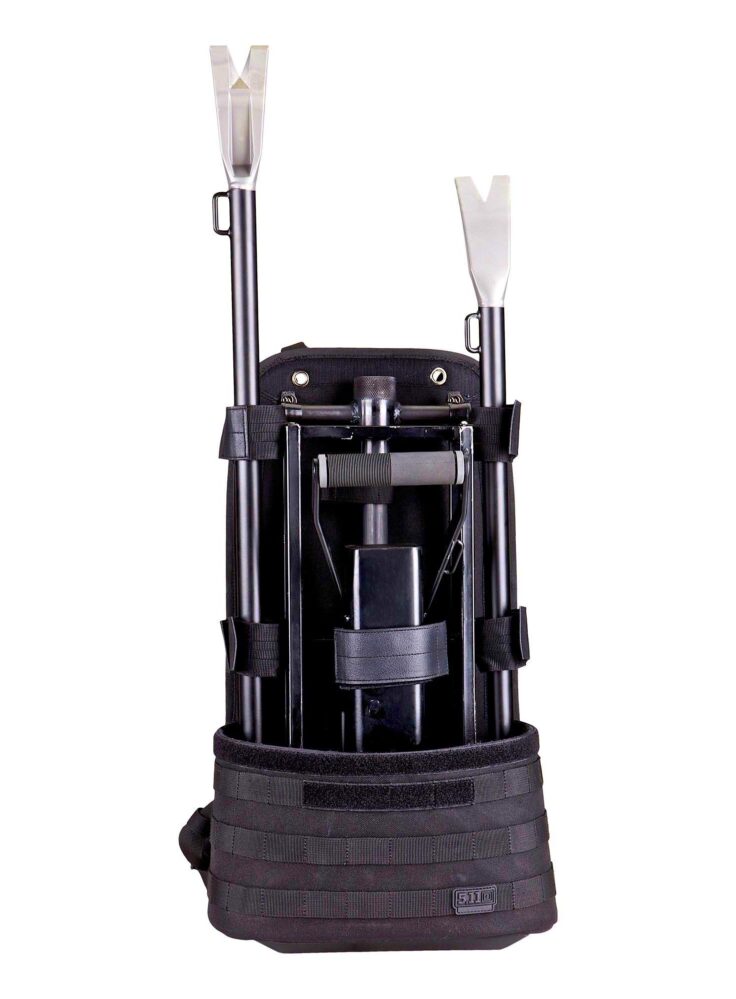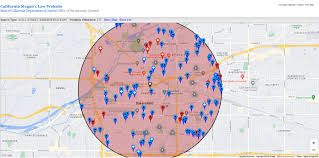How Law Enforcement Uses Breaching Tools
Breaching tools play a role in law enforcement activities especially during critical situations like raids and emergency rescues. These tools are crafted to swiftly and effectively access secured or blocked off areas. Their usage goes beyond relying on strength; it entails striking a balance between skill and technological advancement. I recall attending a demonstration where an experienced officer emphasized the importance of precision and caution when utilizing these tools. It’s not merely about forcing open doors; it’s about doing so in a manner, that ensures safety and efficiency to safeguard lives and uphold the law.
Types of Breaching Tools Used by Law Enforcement
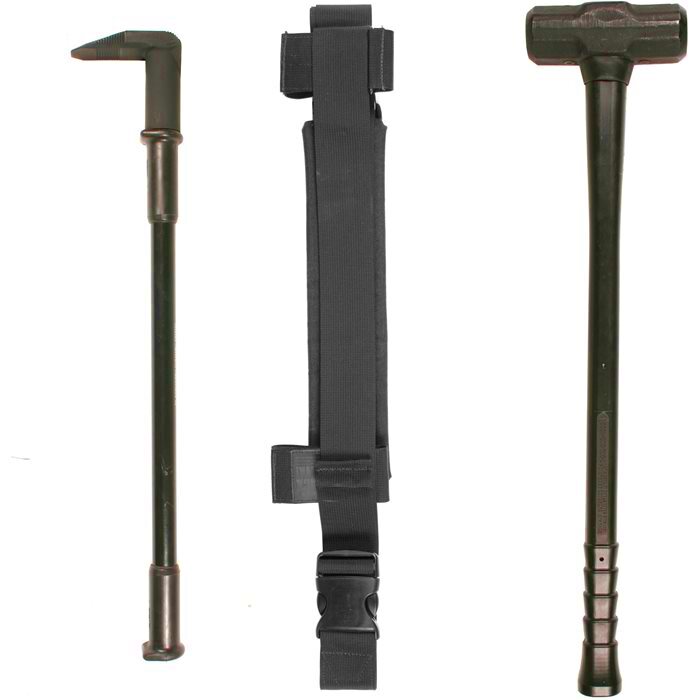
Police forces employ an array of tools for breaching, tailored to specific situations. Here are the main categories.
- Hydraulic Tools: These are powerful tools that use hydraulic pressure to force entry through doors or barriers. They are often referred to as “Jaws of Life” and can pry open even the most stubborn doors.
- Pneumatic Tools: Utilizing compressed air, these tools are designed for quick deployment and can be used to breach doors or walls with precision. They are highly effective in controlled environments.
- Manual Tools: These include sledgehammers, crowbars, and battering rams. While they may seem old-fashioned, they are reliable and versatile, particularly in situations where other tools might be impractical.
- Explosive Tools: In some extreme cases, controlled explosions are used to breach barriers. This method is highly specialized and requires extensive training to ensure safety.
Different tools have their own functions and are selected according on the requirements of the situation. There was an instance where a hand operated tool was favored instead of hydraulic ones because of the sensitivity of the task highlighting the impact that choosing the right tool can have.
How Breaching Tools Enhance Tactical Operations
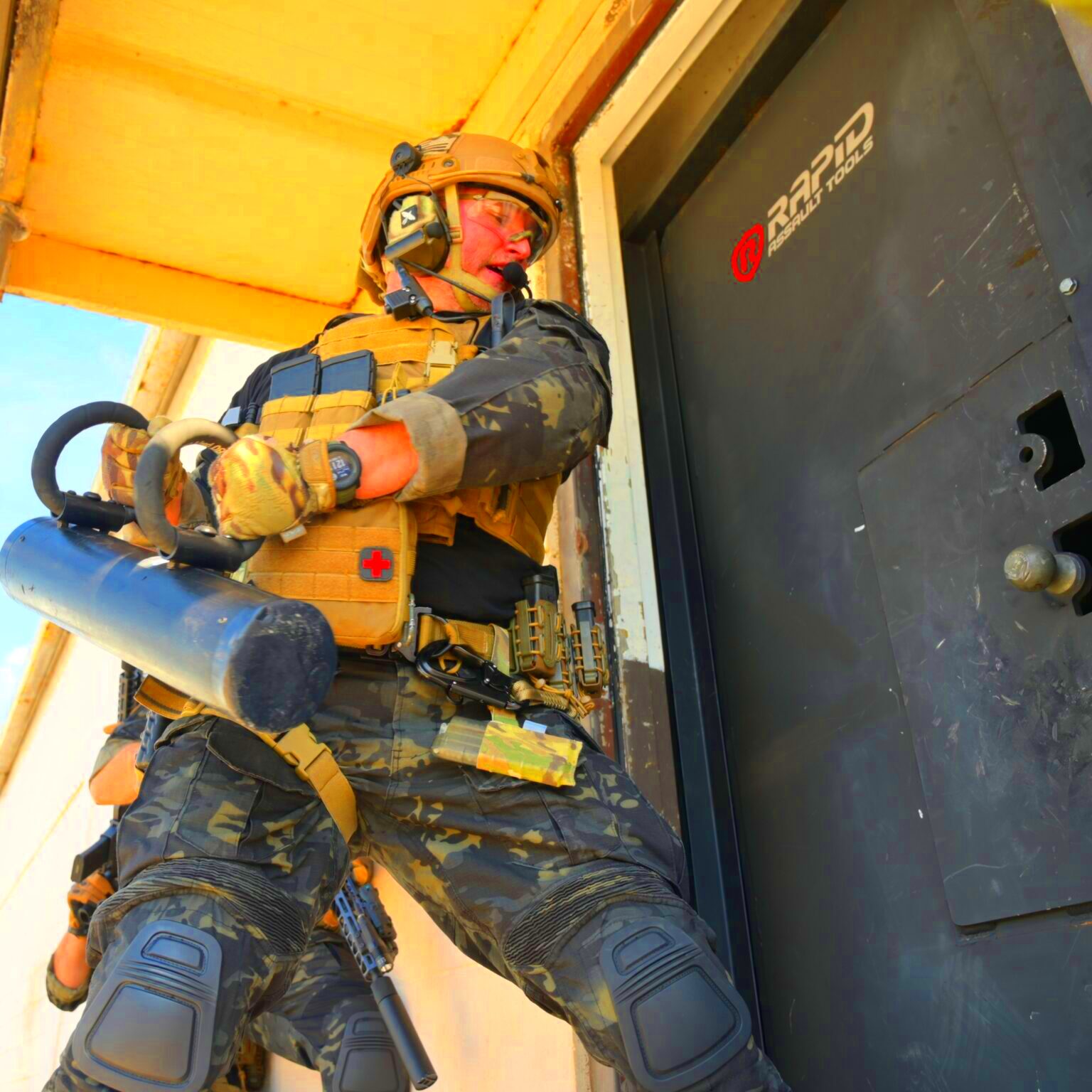
Breaching tools are essential for improving operations as they enable law enforcement to carry out their tasks with accuracy and efficiency. Here’s a look at how these tools have a notable effect:
- Speed and Efficiency: In emergency situations, time is of the essence. Breaching tools enable officers to quickly gain access to buildings or rooms, which can be crucial in saving lives or apprehending suspects.
- Safety: Proper use of breaching tools helps to minimize risks to both officers and civilians. For instance, hydraulic tools can be used to force entry without causing unnecessary damage, reducing the chance of injury.
- Versatility: Different situations call for different approaches. Breaching tools provide law enforcement with a range of options to handle various types of barriers, whether it’s a heavily fortified door or a simple lock.
- Precision: Advanced breaching tools, such as pneumatic tools, allow for precise entry, which can be crucial in delicate operations where minimizing disruption is key.
I have witnessed the impact of having the tool used effectively in managing what could have been a chaotic scenario. The blend of technology with proficient handling of breaching equipment showcases the progress, in law enforcement and their dedication to ensuring public safety.
Legal and Ethical Considerations of Using Breaching Tools
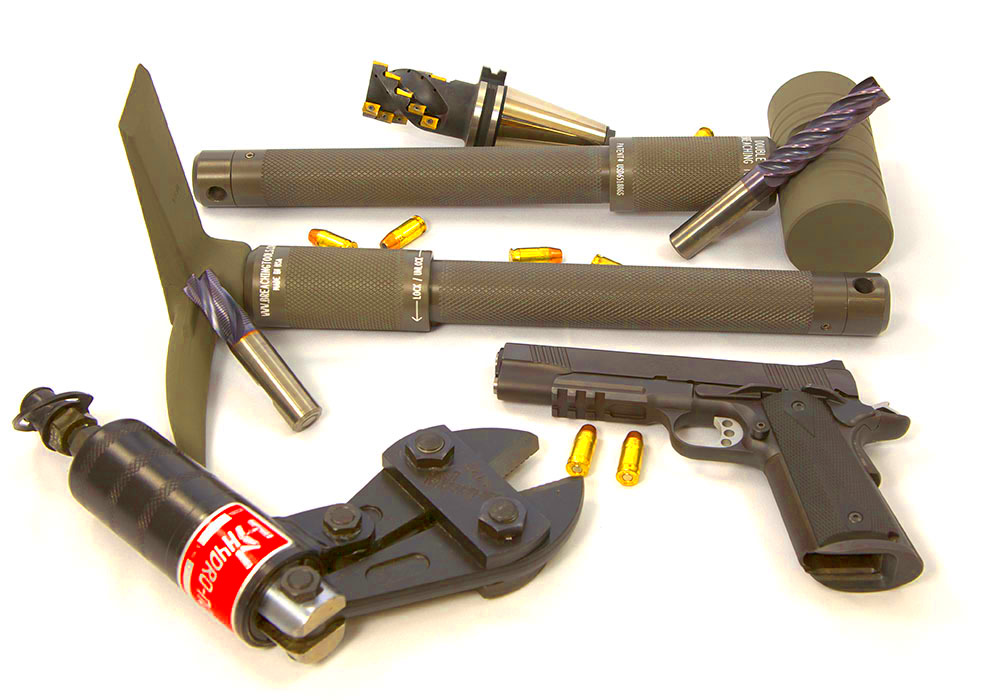
When it comes to using tools for breaching by law enforcement it goes beyond mere strength. There are also numerous legal and ethical factors to take into account. I recall a conversation I had with a retired officer who stressed the significance of following protocols and upholding human rights during missions. Lets delve deeper into the key aspects to consider.
- Legal Framework: Law enforcement must operate within the bounds of the law when using breaching tools. This means obtaining necessary warrants and ensuring that the use of force is justified. Unauthorized use of these tools can lead to legal repercussions and undermine public trust.
- Privacy Concerns: Breaching tools can potentially infringe on individuals’ privacy. It’s crucial that their use is strictly limited to situations where it’s absolutely necessary, and that any damage caused is minimized and addressed appropriately.
- Ethical Responsibility: Officers must balance the urgency of their mission with respect for the people affected. This includes avoiding unnecessary damage and considering the psychological impact on those who might witness or experience the breach.
- Accountability: There must be accountability for the use of breaching tools. Proper documentation and reporting of their use help ensure that operations are conducted responsibly and transparently.
I observed a situation where a group approached a delicate task meticulously following all legal and moral guidelines. This served as a reminder of the importance of law enforcement conducting their operations with accuracy and honesty to ensure that their actions remain within the confines of the law.
Case Studies: Successful Use of Breaching Tools
Analyzing instances where breaching tools have been used in real life can offer valuable perspectives on how well they work and their practical use. Here are some case studies showcasing their effectiveness.
| Case Study | Description | Outcome |
|---|---|---|
| Operation Quick Entry | In a high-risk raid, law enforcement used hydraulic tools to breach a fortified warehouse door quickly. | The operation was successful, resulting in the arrest of several suspects and the seizure of illegal goods. |
| Rescue Mission Alpha | During a hostage situation, pneumatic tools were used to create a precise entry point in a heavily secured building. | The hostages were safely rescued without any casualties, thanks to the controlled and efficient use of the tools. |
| Operation Safe House | Manual breaching tools, such as battering rams, were employed in a situation where stealth and minimal noise were required. | The breach was executed quietly, allowing officers to apprehend suspects without alerting others in the vicinity. |
These situations demonstrate the impact of breaching tools on the success of missions when employed strategically. I remember an instance during one of these missions where the selection of tool and technique played a role in ensuring a smooth and secure outcome. This highlights the importance of combining technology with field expertise.
Training and Certification for Law Enforcement
The effective deployment of breaching tools depends significantly on the training and accreditation of police personnel. Adequate training ensures that officers are proficient not, in operating the tools but also in comprehending their consequences. Here’s an overview of the usually included in the training and certification procedure.
- Hands-On Training: Officers receive practical training on how to use various breaching tools. This includes learning the correct techniques and understanding the operational limits of each tool.
- Scenario-Based Exercises: Training often includes simulated scenarios to help officers practice breaching techniques in a controlled environment. These exercises help prepare them for real-world situations.
- Certification Programs: Many jurisdictions require officers to complete certification programs to ensure they meet the necessary standards for using breaching tools. Certification often includes written exams and practical assessments.
- Continuous Education: Given the advancements in technology, ongoing education is essential. Officers must stay updated on new tools, techniques, and legal considerations.
Having witnessed a number of training sessions I can see just how vital this groundwork is. The level of professionalism and expertise showcased by the officers in these sessions is truly remarkable. It underscores the commitment needed to carry out such responsibilities with competence. Adequate training not boosts operational effectiveness but also safeguards safety and adherence to legal requirements.
Future Trends in Breaching Technology
The field of breaching technology is constantly progressing thanks to advancements in engineering and shifts in operational requirements. Looking back at the developments throughout the years it’s intriguing to witness how innovation influences the equipment used by law enforcement agencies. Here are a few trends to watch out for in breaching technology.
- Smart Breaching Tools: Future breaching tools are likely to incorporate smart technology, including sensors and digital interfaces. These tools could provide real-time data about the structural integrity of barriers, helping officers make more informed decisions.
- Robotics and Automation: Robotics is becoming a more prominent feature in law enforcement. Automated breaching tools could handle dangerous tasks, reducing the risk to officers and increasing efficiency in high-risk scenarios.
- Advanced Materials: The development of new, lightweight yet durable materials will enhance the design of breaching tools, making them more portable and easier to handle without sacrificing strength.
- Integration with Surveillance Technology: Breaching tools might soon be integrated with surveillance systems, allowing officers to plan their entry with greater precision based on real-time visuals and data.
At a recent conference I witnessed a showcase of these state of the art tools. The fusion of modern technology and traditional methods was truly impressive showcasing how future progress will enhance the craft and science of breaching. It serves as a reminder, for law enforcement to keep pace with advancements in technology to maintain safety and effectiveness in their operations.
Maintaining and Repairing Breaching Tools
To ensure breaching tools work effectively its crucial to keep them well maintained. Taking care of repairs not only prolongs the life of these tools but also guarantees their dependability during situations. Lets take a look at the maintenance and repair of breaching tools.
- Regular Inspections: Conduct routine inspections to check for any signs of wear and tear. Look for rust, damage, or any parts that may need adjustment or replacement.
- Cleaning: Clean the tools after each use to remove debris and prevent corrosion. For hydraulic and pneumatic tools, ensure that fluid levels and filters are checked regularly.
- Proper Storage: Store tools in a dry, secure place to protect them from environmental damage. Use protective covers and ensure that tools are kept away from extreme temperatures.
- Scheduled Servicing: Arrange for professional servicing at regular intervals. Certified technicians can perform more in-depth repairs and maintenance, ensuring that tools are in optimal condition.
I remember an instance when a small lapse in upkeep resulted in a failure during a crucial task. This event highlighted the significance of being attentive to the maintenance of these crucial instruments. Consistent upkeep and prompt repairs are not merely requirements but also crucial elements in safeguarding the effectiveness and safety of law enforcement missions.
FAQ
Q: What types of breaching tools are most commonly used by law enforcement?
Law enforcement agencies often employ tools such as hydraulic, pneumatic, hand operated and occasionally explosive ones. The choice of tool depends on the specific needs of the task at hand.
Q: How does training impact the effectiveness of breaching tools?
A: To use breaching tools effectively training is essential. It helps officers grasp the tools capabilities, usage techniques and safety measures resulting in smoother and safer operations.
Q: Are there legal restrictions on the use of breaching tools?
Certainly, there are limitations in place. The deployment of tools for breaching purposes must adhere to legal requirements such as securing appropriate warrants and ensuring that the level of force employed is reasonable and commensurate with the circumstances at hand.
Q: What are some future advancements expected in breaching technology?
In the future we might see improvements in breaching technology such as intelligent tools equipped with sensors, robotic systems and automation features. There could also be advancements in materials used for tool design and the incorporation of surveillance technology to enhance accuracy in operations.
Q: How often should breaching tools be serviced?
Breaching equipment needs to be checked frequently post usage and maintained as per the manufacturers guidelines or whenever any signs of damage or deterioration are observed. Its also wise to get it serviced by professionals on a basis.
Conclusion
In the ever changing world of law enforcement breaching tools are a key part of operations. Whether it’s traditional manual tools or cutting edge smart technology these gadgets are vital for ensuring that officers can carry out their responsibilities efficiently and securely. Looking back on the progress and practices in this area it’s evident that ongoing improvement and proper care of breaching tools are crucial for their effectiveness. Be it through advancements or rigorous training the objective remains consistent, to safeguard lives and uphold the law with accuracy and integrity. As we move forward adopting technologies and refining methods will further boost the capabilities of these essential instruments ensuring they continue to be a dependable resource in critical situations.
